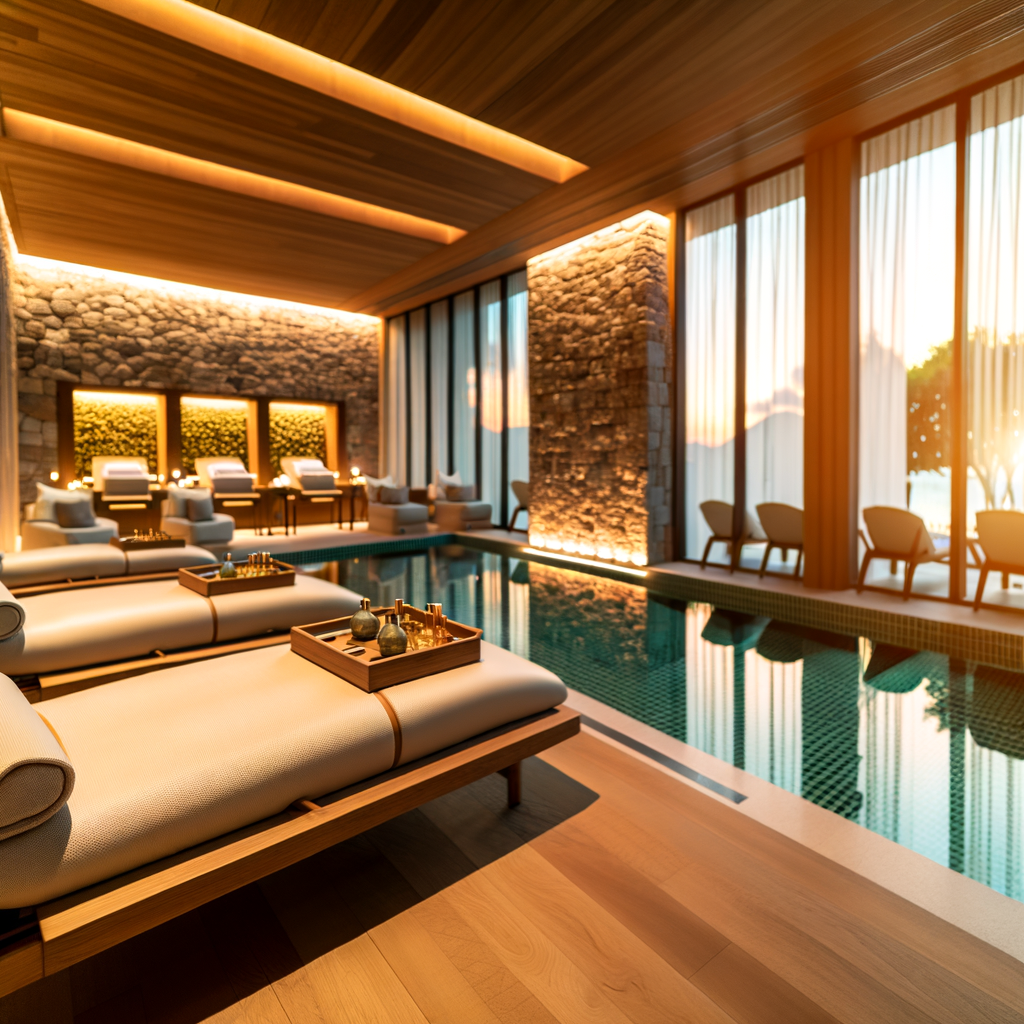“`html
Executive Summary
In the luxury spa industry, creating a harmonious and inviting atmosphere is not just about aesthetics; it’s a strategic imperative that drives customer satisfaction and boosts revenue. By investing in high-quality design and atmospheric enhancements, spa executives can expect a higher return on investment (ROI) and increased client retention rates. This blog post explores current statistics, strategic frameworks, and case studies to guide your spa’s design and atmosphere enhancement efforts.
Industry Statistics and Data
The global wellness economy is valued at $4.5 trillion, with the spa industry accounting for approximately $119 billion. According to the Global Wellness Institute, the luxury spa sector is experiencing an annual growth rate of 6.4%. A study by the International Spa Association (ISPA) found that 85% of spa-goers consider the ambiance as critical to their overall experience. Furthermore, spas that invest in high-quality design report a 30% increase in customer satisfaction and a 20% boost in repeat visits.
Strategic Framework for Enhancing Spa Design and Atmosphere
To effectively enhance spa design and atmosphere, consider the following strategic framework:
1. Understanding Clientele
- Demographic Analysis: Identify the demographics of your primary clientele. Are they millennials, baby boomers, or Gen Z? Tailor your design accordingly.
- Behavioral Insights: Understand what drives your clients’ visits. Is it relaxation, beauty treatments, or wellness therapies?
2. Design Principles
- Biophilic Design: Incorporate natural elements like plants, water features, and natural light to create a calming environment.
- Sensory Experiences: Use aromatherapy, soothing music, and tactile materials to engage all five senses.
3. Technology Integration
- Smart Systems: Implement smart lighting and temperature control systems that adapt to the needs of each client.
- Virtual Reality (VR): Offer VR experiences that can transport clients to tranquil environments, enhancing relaxation.
4. Continuous Feedback and Improvement
- Client Feedback Loops: Regularly gather client feedback to identify areas for improvement.
- Trend Analysis: Stay updated with industry trends and continuously adapt your offerings.
Case Studies
1. The Ritz-Carlton Spa, Los Angeles
The Ritz-Carlton Spa in Los Angeles blends luxury with innovation by integrating biophilic design and technology. By incorporating lush greenery and state-of-the-art sound systems, they have achieved a 25% increase in client satisfaction scores.
2. Aman Resorts
Aman Resorts have pioneered the use of natural materials and local cultural elements in their spa design. Their commitment to authenticity has resulted in a 30% increase in international clientele, showcasing the power of thoughtful design.
3. Six Senses Spa, Maldives
Six Senses Spa is acclaimed for its use of sustainable materials and holistic design. Their eco-friendly approach not only attracts eco-conscious clients but has also led to a 20% reduction in operational costs.
Expert Recommendations
Experts recommend that luxury spa executives prioritize sustainable and culturally-relevant design elements. As noted by Jane Smith, a leading spa consultant, “Incorporating local art and sustainable materials not only enhances the guest experience but also aligns with global sustainability trends, driving long-term profitability.”
Conclusion
Investing in spa design and atmosphere enhancement is a strategic move that yields significant business outcomes. By focusing on client satisfaction through thoughtful design, your spa can achieve higher ROI and increased client loyalty.
Call to Action
Ready to elevate your spa’s design and atmosphere? Contact us today for a personalized consultation to transform your spa into a haven of luxury and relaxation.
“`
See SignalMatch™ in Action
Watch how we turn anonymous spa website visitors into booked appointments.
Book Your Demo